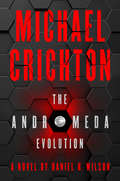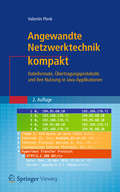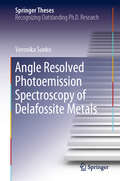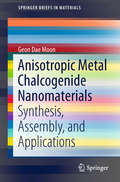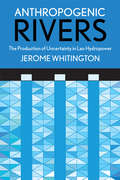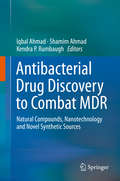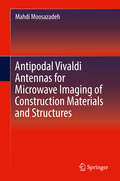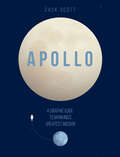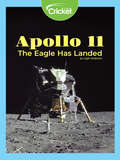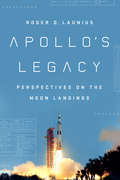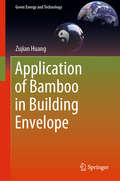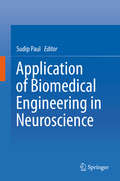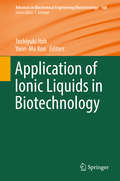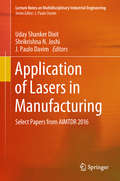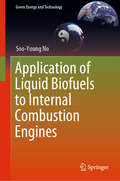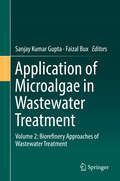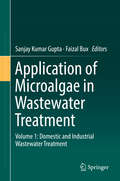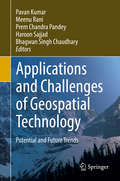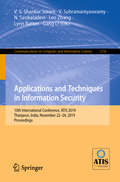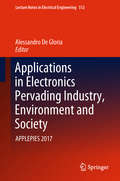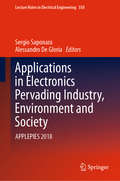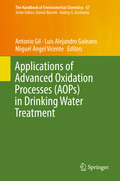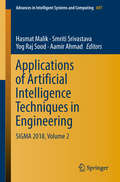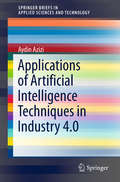- Table View
- List View
The Andromeda Evolution
by Michael Crichton Daniel WilsonFifty years after The Andromeda Strain made Michael Crichton a household name—and spawned a new genre, the technothriller—the threat returns, in a gripping sequel that is terrifyingly realistic and resonant. <P><P>The Evolution is Coming.In 1967, an extraterrestrial microbe came crashing down to Earth and nearly ended the human race. Accidental exposure to the particle—designated The Andromeda Strain—killed every resident of the town of Piedmont, Arizona, save for an elderly man and an infant boy. Over the next five days, a team of top scientists assigned to Project Wildfire worked valiantly to save the world from an epidemic of unimaginable proportions. In the moments before a catastrophic nuclear detonation, they succeeded. <P><P>In the ensuing decades, research on the microparticle continued. And the world thought it was safe…Deep inside Fairchild Air Force Base, Project Eternal Vigilance has continued to watch and wait for the Andromeda Strain to reappear. On the verge of being shut down, the project has registered no activity—until now. A Brazilian terrain-mapping drone has detected a bizarre anomaly of otherworldly matter in the middle of the jungle, and, worse yet, the tell-tale chemical signature of the deadly microparticle. <P><P>With this shocking discovery, the next-generation Project Wildfire is activated, and a diverse team of experts hailing from all over the world is dispatched to investigate the potentially apocalyptic threat. <P><P>But the microbe is growing—evolving. And if the Wildfire team can’t reach the quarantine zone, enter the anomaly, and figure out how to stop it, this new Andromeda Evolution will annihilate all life as we know it. <P><b>A New York Times Bestseller</b>
Angewandte Netzwerktechnik kompakt: Dateiformate, Übertragungsprotokolle und ihre Nutzung in Java-Applikationen (IT kompakt)
by Valentin PlenkErfahren Sie mit diesem Buch alles über die angewandte NetzwerktechnikIm privaten Bereich spielt Netzwerktechnik eine eher untergeordnete Rolle. Dabei sorgt sie erst dafür, dass die Kommunikation via Internet funktioniert. Der industrielle Sektor hat die Vorteile des Datenaustauschs mit Hilfe von Netzwerken allmählich erkannt. Doch erst im Rahmen der „Industrie 4.0“ wird laut Valentin Plenk die Datenübertragung in Echtzeit mehr Bedeutung gewinnen. Mit Blick auf diese Entwicklung stellt er in seinem Buch im Sinne der angewandten Netzwerktechnik speziell die höheren Schichten der Netzwerktechnik in den Fokus. Dieses kompakte Lehrbuch zeigt Ihnen anhand von konkreten, in Java ausprogrammierten Beispielen, wie Informationen zwischen Systemen über ein Netzwerk ausgetauscht werden können. Pro Kapitel behandelt dieses Netzwerktechnik-Buch ein bestimmtes Thema. Nach der Einführung in die Grundlagen der Kommunikation geht der Autor zunächst auf Java-Streams, Zeichencodierung sowie die Netzwerkanalyse mit Wireshark ein. Anschließend schenkt Plenk speziell folgenden Datenaustauschformaten sowie Protokollen besonderes Augenmerk:• JSON• HTML• HTTP• OPC UA• TCP/IP• UDP/IPKonkrete Beispiele und Übungen geben Ihnen PraxiseinblickeAuf diese Weise deckt dieses Buch über die angewandte Netzwerktechnik den gesamten Bereich technischer Kommunikation ab, von den Netzwerkprotokollen bis hin zum Versenden von Netzwerktelegrammen. Durch diese breite Themenauswahl bekommen Sie als Leser ein tieferes Verständnis für die typischen Problemstellungen in der Anwendung der Netzwerktechnik. Sie erfahren mehr über die Darstellung von Daten in einem bestimmten Dateiformat und wie Sie Daten mittels Standardprotokollen austauschen können. Zudem lernen Sie, wie Sie eigene, einfache Protokolle auf der Basis von TCP/IP erstellen können. Schwerpunkt des Buches bildet dabei immer die Anwendung von Netzwerken.Mit Hilfe zahlreicher Übungsaufgaben (inklusive Lösungsvorschlägen) sowie Anwendungsbeispielen können Sie Ihren persönlichen Kenntnisstand überprüfen und das Gelernte vertiefen. So sind Sie ideal auf die Praxis vorbereitet. Die zweite Auflage des Buchs „Angewandte Netzwerktechnik kompakt“ wurde um den Themenbereich Webservices ergänzt. Im Abschnitt zu UDP/IP finden Sie jetzt außerdem hilfreiche Codebeispiele für Broadcast und Multicast.
Angle Resolved Photoemission Spectroscopy of Delafossite Metals (Springer Theses)
by Veronika SunkoThis thesis describes the results of angle resolved photoemission spectroscopy experiments on delafossite oxide metals, and theoretical work explaining these observations. The study was motivated by the extraordinarily high conductivity of the non-magnetic delafossites PdCoO2 and PtCoO2, the measurement of whose electronic structure is reported and discussed. Two unexpected effects were observed in the course of the investigation; each is described and analysed in detail. Firstly, a previously unrecognised type of spectroscopic signal, allowing the non-magnetic probe of photoemission to become sensitive to spin-spin correlations, was observed in the antiferromagnetic PdCrO2. Its origin was identified as the Kondo-like coupling of itinerant and Mott insulating electrons. Furthermore, surface states exhibiting an unusually large Rashba-like spin-splitting were observed on the transition metal terminated surfaces of delafossites. The large inversion symmetry breaking energy scale, a consequence of the unusual structure of the surface layer, is identified as the origin of the effect.
Anisotropic Metal Chalcogenide Nanomaterials: Synthesis, Assembly, And Applications (SpringerBriefs in Materials)
by Geon Dae MoonThis book explores the recent advances in designing and synthesizing one- and two-dimensional metal chalcogenide nanostructures, along with their practical applications, helping readers understand what has happened, and what is currently happening in the field of nanotechnology. It also includes a comprehensive table showing 1D and 2D nanostructured metal chalcogenides, which presents the recent developments from a synthetic point of view. Further, it describes the wide applicability of anisotropic metal chalcogenides, such as in electronics, energy storage and conversion, and sensors. Lastly it discusses the current understanding of the thermodynamic and kinetic aspects associated with the forming mechanisms of anisotropic metal chalcogenide nanostructures. This book is a valuable reference resource for practitioners and researchers, enabling them to obtain a quick overview of anisotropic metal chalcogenide nanomaterials through synthetic approaches and related applications. Presenting representative applications of anisotropic metal chalcogenide nanomaterials that are important in the industrial sector, it is also of interest to academics and industry specialists.
Anthropogenic Rivers: The Production of Uncertainty in Lao Hydropower (Expertise: Cultures and Technologies of Knowledge)
by Jerome WhitingtonIn the 2000s, Laos was treated as a model country for the efficacy of privatized, "sustainable" hydropower projects as viable options for World Bank-led development. By viewing hydropower as a process that creates ecologically uncertain environments, Jerome Whitington reveals how new forms of managerial care have emerged in the context of a privatized dam project successfully targeted by transnational activists. Based on ethnographic work inside the hydropower company, as well as with Laotians affected by the dam, he investigates how managers, technicians and consultants grapple with unfamiliar environmental obligations through new infrastructural configurations, locally-inscribed ethical practices, and forms of flexible experimentation informed by American management theory.Far from the authoritative expertise that characterized classical modernist hydropower, sustainable development in Laos has been characterized by a shift from the risk politics of the 1990s to an ontological politics in which the institutional conditions of infrastructure investment are pervasively undermined by sophisticated ‘hactivism.’ Whitington demonstrates how late industrial environments are infused with uncertainty inherent in the anthropogenic ecologies themselves. Whereas ‘anthropogenic’ usually describes human-induced environmental change, it can also show how new capacities for being human are generated when people live in ecologies shot through with uncertainty. Implementing what Foucault called a "historical ontology of ourselves," Anthropogenic Rivers formulates a new materialist critique of the dirty ecologies of late industrialism by pinpointing the opportunistic, ambitious and speculative ontology of capitalist natures.
Antibacterial Drug Discovery to Combat MDR: Natural Compounds, Nanotechnology and Novel Synthetic Sources
by Iqbal Ahmad Shamim Ahmad Kendra P. RumbaughThis book compiles the latest information in the field of antibacterial discovery, especially with regard to the looming threat of multi-drug resistance. The respective chapters highlight the discovery of new antibacterial and anti-infective compounds derived from microbes, plants, and other natural sources. The potential applications of nanotechnology to the fields of antibacterial discovery and drug delivery are also discussed, and one section of the book is dedicated to the use of computational tools and metagenomics in antibiotic drug discovery. Techniques for efficient drug delivery are also covered. The book provides a comprehensive overview of the progress made in both antibacterial discovery and delivery, making it a valuable resource for academic researchers, as well as those working in the pharmaceutical industry.
Antipodal Vivaldi Antennas for Microwave Imaging of Construction Materials and Structures
by Mahdi MoosazadehThe research described here develops and applies novel, ultra-wideband (UWB) antipodal Vivaldi antennas for high-resolution detection of defects and damages in composite construction materials and structures using their microwave and millimeter wave imaging. The author examines the challenges of applying the UWB microwave technique in that the technique is dependent on the operating frequency used for the specified material under test. In this context, the objectives of this research volume include, but are not limited to, development of a small UWB antenna at frequency range from 5 GHz - 50 GHz for microwave and millimeter wave imaging of wide range of low loss construction materials, design of a small UWB antenna operating for microwave and millimeter wave imaging of low loss and high loss materials for the purpose of detection of surface damages of concrete under low loss materials, and development of a UWB antenna at frequency range from 2 GHz - 27 GHz for microwave imaging of low loss and high loss materials such as concrete structures and layered structures for the purpose of detection of cavities inside concrete.
Apollo: A Graphic Guide to Mankind's Greatest Mission
by Zack ScottIllustrations, infographics, and little-known facts about NASA’s Apollo program and the 1969 moon landing.July 20, 1969, marked one of the greatest achievements of mankind—the moon landing. In his infographic-packed book, Apollo: A Graphic Guide to Mankind’s Greatest Mission, Zack Scott recounts the entire journey of the Apollo space program. Unlike previous books on this topic, Apollo illustrates the tiniest details of how man came to walk on the moon, paying particular attention to many of the lesser-known facts about the mission. Artful infographics throughout focus on a wide range of details for space-lovers to obsess over—astronaut weights, mission insignia and spacecraft call signs, fuel consumption stats, splashdown sites around the world, and much, much more. A fresh, lively approach to the subject, Apollo is the perfect combination of science, design, math, and space.
Apollo 11: The Eagle Has Landed
by Leigh AndersonHave you ever looked into the night sky and wished that you could walk on the Moon? Find about what it is like from the astronauts that were first to do it! Learn about how Neil Armstrong, Edwin Aldrin, and Michael Collins traveled into space and created history in 1969, and what it was like to take those famous first steps that made “one giant leap for mankind."
The Apollo Missions for Kids: The People and Engineering Behind the Race to the Moon, with 21 Activities (For Kids series)
by Jerome PohlenIn 1961 President Kennedy issued a challenge to land a person on the moon and return safely to Earth before the end of the 1960s, a bold proclamation at the time, given that only one US astronaut had been to space, for just 15 minutes. The race to the moon was part of the larger Cold War between the United States and the Soviet Union, a race where the Russians appeared far ahead of the Americans. Apollo was a complicated, dangerous and expensive adventure involving 400,000 people across the nation. Before it was over, NASA had made 11 Apollo flights, six of which landed on the moon, and eight astronauts had lost their lives. But it was also fun, and the crews never missed a chance to enjoy the trip or pull off a prank 240,000 miles from home. The Apollo Missions for Kids tells the story from the perspective of those who lived it—the astronauts and their families, the controllers and engineers, the technicians and politicians who made the impossible possible.
Apollo's Legacy: Perspectives on the Moon Landings
by Roger D. LauniusAn all-encompassing look at the history and enduring impact of the Apollo space programIn Apollo's Legacy, space historian Roger D. Launius explores the many-faceted stories told about the meaning of the Apollo program and how it forever altered American society. The Apollo missions marked the first time human beings left Earth's orbit and visited another world, and thus they loom large in our collective memory. Many have detailed the exciting events of the Apollo program, but Launius offers unique insight into its legacy as seen through multiple perspectives. He surveys a wide range of viewpoints and narratives, both positive and negative, surrounding the program. These include the argument that Apollo epitomizes American technological--and political--progress; technological and scientific advances garnered from the program; critiques from both sides of the political spectrum about the program's expenses; and even conspiracy theories and denials of the program's very existence. Throughout the book, Launius weaves in stories from important moments in Apollo's history to draw readers into his analysis. Apollo's Legacy is a must-read for space buffs interested in new angles on a beloved cultural moment and those seeking a historic perspective on the Apollo program.
Application of Bamboo in Building Envelope (Green Energy and Technology)
by Zujian HuangThis book offers a comprehensive overview of the use of bamboo in building industry. It systematically demonstrates bamboo’s utility in terms of its properties, describing the material properties of typical industrial bamboo products, and discussing their performance evaluation and optimization as building components and in the creation of building envelopes. The book also includes examples of the high-value utilization of bamboo forest resources. Further, it examines how building performance may be affected by conditions such as climate. Including insights from material science, construction design, building physics and building climatology, the book also provides data obtained from technology and market status investigation, laboratory test and the computer simulation.This book appeals to scientists and professionals, as it introduces and tests various bamboo products, demonstrating the advantages and disadvantages for each one. The book is also a valuable resource for civil engineers and students interested in this unique plant material and its application in the building industry.
Application of Biomedical Engineering in Neuroscience
by Sudip PaulThis book focuses on interdisciplinary research in the field of biomedical engineering and neuroscience. Biomedical engineering is a vast field, ranging from bioengineering to brain-computer interfaces. The book explores the system-level function and dysfunction of the nervous system from scientific and engineering perspectives. The initial sections introduce readers to the physiology of the brain, and to the biomedical tools needed for diagnostics and effective therapies for various neurodegenerative and regenerative disorders. In turn, the book summarizes the biomedical interventions that are used to understand the neural mechanisms underlying empathy disorders, and reviews recent advances in biomedical engineering for rehabilitation in connection with neurodevelopmental disorders and brain injuries. Lastly, the book discusses innovations in machine learning and artificial intelligence for computer-aided disease diagnosis and treatment, as well as applications of nanotechnology in therapeutic neurology.
Application of Ionic Liquids in Biotechnology (Advances in Biochemical Engineering/Biotechnology #168)
by Toshiyuki Itoh Yoon-Mo KooThis volume explores how ionic liquids are used in different areas of biotechnology. It also provides insights on the interaction of ionic liquids with biomolecules and biomaterials. Ionic liquids have become essential players in the fields of synthesis, catalysis, extraction and electrochemistry, and their unique properties have opened a wide range of applications in biotechnology. Readers will discover diverse examples of the application of ionic liquids as solvents for biomaterials extraction and pretreatment, in enzymatic and whole cell catalysed reaction, and as activation agents for biocatalysis. Particular attention is given to the biologically functionalized ionic liquids employed in medical and pharmaceutical applications. Although ionic liquids are considered “green solvents”, the contributing authors will also explore their environmental impact when applied to biotechnology. Chemical, biological and medical scientists interested in ionic liquids and biotechnology will find this work instructive and informative.
Application of Lasers in Manufacturing: Select Papers From Aimtdr 2016 (Lecture Notes on Multidisciplinary Industrial Engineering)
by J. Paulo Davim Shrikrishna N. Joshi Uday Shanker DixitThis book mainly addresses the applications of lasers in the manufacture of various industrial components. The technologies presented here have scopes of application ranging from the macro to meso and micro level of components and features. This book includes chapters on the basic and advanced applications of lasers in the manufacturing domain. They present theoretical and practical aspects of laser technology for various applications such as laser-based machining, micro-scribing, texturing, machining of micro-sized channels; laser welding; laser-based correction of sheet metal, i.e. straightening; laser forming; and laser technology for 3-D printing. Lasers have various applications such as the production of powerful lights for illumination or decoration; measurement of velocity (transportation) and length; interferometry; printing; recording; communication; bio-medical instrumentation and pollution detection. A significant body of literature is available on the physics of lasers and types of lasers. However it has been noted there are a few books published on the “applications of lasers in manufacturing domain,” a gap that this book remedies. Gathering contributions by leading engineers and academicians in this area, it offers a valuable source of information for young scientists and research students.
Application of Liquid Biofuels to Internal Combustion Engines (Green Energy and Technology)
by Soo-Young NoThis book provides a comprehensive overview of the application of liquid biofuels to internal combustion (IC) engines. Biofuels are one of the most promising renewable and sustainable energy sources. Particularly, liquid biofuels obtained from biomass could become a valid alternative to the use of fossil fuels in the light of increasingly stringent environmental constraints. In this book, the discussion is limited to liquid biofuels obtained from triglycerides and lignocellulose among the many different kinds of biomass. Several liquid biofuels from triglycerides, straight vegetable oil, biodiesel produced from inedible vegetable oil, hydrotreated vegetable oil, and pyrolytic oil have been selected for discussion, as well as biofuels from lignocellulose bio-oil, alcohols such as methanol, ethanol and butanol, and biomass-to-liquids diesel. This book includes three chapters on the application of methanol, ethanol and butanol to advanced compression ignition (CI) engines such as LTC, HCCI, RCCI and DF modes. Further, the application of other higher alcohols and other drop-in fuels such as DMF, MF, MTHF, and GVL are also discussed. The book will be a valuable resource for graduate students, researchers and engine designers who are interested in the application of alcohols and other biofuels in advanced CI engines, and also useful for alternative energy planners selecting biofuels for CI engines in the future.
Application of Microalgae in Wastewater Treatment: Volume 2: Biorefinery Approaches of Wastewater Treatment
by Sanjay Kumar Gupta Faizal BuxThis two-volume work presents comprehensive, accurate information on the present status and contemporary development in phycoremediation of various types of domestic and industrial wastewaters. The volume covers a mechanistic understanding of microalgae based treatment of wastewaters, including current challenges in the treatment of various organic and inorganic pollutants, and future opportunities of bioremediation of wastewater and industrial effluents on an algal platform. The editors compile the work of authors from around the globe, providing insight on key issues and state-of-the-art developments in algal bioremediation that is missing from the currently available body of literature. The volume hopes to serve as a much needed resource for professors, researchers and scientists interested in microalgae applications for wastewater treatment. Volume 2 addresses the various biorefinery aspects and applications of algal-based wastewater treatment in industrial and domestic contexts. The analyses are approached from multiple perspectives, including biotechnology, commercial, economic, and sustainability. The authors discuss the potential of microalgae for integrated biomass production utilizing various resources to treat wastewaters, and include evaluations of the economical and commercialization potential for such processes.
Application of Microalgae in Wastewater Treatment: Volume 1: Domestic and Industrial Wastewater Treatment
by Faizal Bux Sanjay Kumar GuptaThis two-volume work presents comprehensive, accurate information on the present status and contemporary development in phycoremediation of various types of domestic and industrial wastewaters. The volume covers a mechanistic understanding of microalgae based treatment of wastewaters, including current challenges in the treatment of various organic and inorganic pollutants, and future opportunities of bioremediation of wastewater and industrial effluents on an algal platform. The editors compile the work of authors from around the globe, providing insight on key issues and state-of-the-art developments in algal bioremediation that is missing from the currently available body of literature. The volume hopes to serve as a much needed resource for professors, researchers and scientists interested in microalgae applications for wastewater treatment. Volume 1 focuses on the different aspects of domestic and industrial wastewater treatment by microalgae. The case studies include examples such as genetic technologies as well as the development and efficient use of designer consortia for enhanced utilization of microalgae. This volume provides thorough and comprehensive information on removal of persistent and highly toxic contaminants such as heavy metals, organic pesticides, polyaromatic hydrocarbons, endocrine disruptors, pharmaceutical compounds, and dyes from wastewater by microalgae, diatoms, and blue-green algae. Design considerations for algal ponds and efficient use of photobioreactors and HRAPs for wastewater treatment are some other highlights. This volume addresses the applications, potentials, and future opportunities for these various considerations in water pollution mitigation using algal technologies.
Applications and Challenges of Geospatial Technology: Potential and Future Trends
by Pavan Kumar Meenu Rani Prem Chandra Pandey Haroon Sajjad Bhagwan Singh ChaudharyThis book advances the scientific understanding and application of space-based technologies to address a variety of areas related to sustainable development; including environmental systems analysis, environmental management, clean processes, green chemistry, and green engineering. Geo-spatial techniques have gained considerable interest in recent decades among the earth and environmental science communities for solving and understanding various complex problems and approaches towards sustainable technologies. The book encompasses several scopes of interests on sustainable technologies in areas such as water resources, forestry, remote sensing, meteorology, atmospheric and oceanic modeling, environmental engineering and management, civil engineering, air and environmental pollution, water quality problems, etc. The book will appeal to people with an interest in geo-spatial techniques, sustainable development and other diverse backgrounds within earth and environmental sciences field.
Applications and Techniques in Information Security: 10th International Conference, ATIS 2019, Thanjavur, India, November 22–24, 2019, Proceedings (Communications in Computer and Information Science #1116)
by V. S. Shankar Sriram V. Subramaniyaswamy N. Sasikaladevi Leo Zhang Lynn Batten Gang LiThis book constitutes the refereed proceedings of the 10th International Conference on Applications and Techniques in Information Security, ATIS 2019, held in Tamil Nadul, India, in November 2019.The 22 full papers and 2 short papers presented in the volume were carefully reviewed and selected from 50 submissions. The papers are organized in the following topical sections: information security; network security; intrusion detection system; authentication and key management system; security centric applications.
Applications in Electronics Pervading Industry, Environment and Society: APPLEPIES 2017 (Lecture Notes in Electrical Engineering #512)
by Alessandro De GloriaThis book provides a thorough overview of cutting-edge research on electronics applications relevant to industry, the environment, and society at large. It covers a broad spectrum of application domains, from automotive to space and from health to security, while devoting special attention to the use of embedded devices and sensors for imaging, communication and control. The book is based on the 2017 ApplePies Conference, held in Rome, Italy in September 2017, which brought together researchers and stakeholders to consider the most significant current trends in the field of applied electronics and to debate visions for the future. Areas addressed by the conference included information communication technology; biotechnology and biomedical imaging; space; secure, clean and efficient energy; the environment; and smart, green and integrated transport. As electronics technology continues to develop apace, constantly meeting previously unthinkable targets, further attention needs to be directed toward the electronics applications and the development of systems that facilitate human activities. This book, written by industrial and academic professionals, represents a valuable contribution in this endeavor.
Applications in Electronics Pervading Industry, Environment and Society: APPLEPIES 2018 (Lecture Notes in Electrical Engineering #550)
by Alessandro De Gloria Sergio SaponaraThis book provides a thorough overview of cutting-edge research on electronics applications relevant to industry, the environment, and society at large. It covers a broad spectrum of application domains, from automotive to space and from health to security, while devoting special attention to the use of embedded devices and sensors for imaging, communication and control. The book is based on the 2018 ApplePies Conference, held in Pisa, Italy in September 2018, which brought together researchers and stakeholders to consider the most significant current trends in the field of applied electronics and to debate visions for the future. Areas addressed by the conference included information communication technology; biotechnology and biomedical imaging; space; secure, clean and efficient energy; the environment; and smart, green and integrated transport. As electronics technology continues to develop apace, constantly meeting previously unthinkable targets, further attention needs to be directed toward the electronics applications and the development of systems that facilitate human activities. This book, written by industrial and academic professionals, represents a valuable contribution in this endeavor.
Applications of Advanced Oxidation Processes (The Handbook of Environmental Chemistry #67)
by Antonio Gil Luis Alejandro Galeano Miguel Ángel VicenteThis volume reviews the drinking water treatments in which AOPs display a high application potential. Firstly it reveals the typical supply sources and limitations of conventional technologies and critically reviews natural organic matter characterization and removal techniques, focusing mainly on AOP treatments. It then explores using AOPs for simultaneous inactivation/disinfection of several types of microorganisms, including highly resistant Cryptosporidium protozoa. Lastly, it discusses relevant miscellaneous topics, like the most promising AOP solid catalysts, the regime change of Fenton-like processes toward continuous reactors, the application of chemometrics for process optimization, the impact on disinfection byproducts and the tracing of toxicity during AOP treatments. This work is a useful reference for researchers and students involved in water technologies, including analytical and environmental chemistry, chemical and environmental engineering, toxicology, biotechnology, and related fields. It is intended to encourage industrial and public-health scientists and decision-makers to accelerate the application of AOPs as technological alternatives for the improvement of drinking water treatment plants.
Applications of Artificial Intelligence Techniques in Engineering: SIGMA 2018, Volume 2 (Advances in Intelligent Systems and Computing #697)
by Hasmat Malik Smriti Srivastava Yog Raj Sood Aamir AhmadThe book is a collection of high-quality, peer-reviewed innovative research papers from the International Conference on Signals, Machines and Automation (SIGMA 2018) held at Netaji Subhas Institute of Technology (NSIT), Delhi, India. The conference offered researchers from academic and industry the opportunity to present their original work and exchange ideas, information, techniques and applications in the field of computational intelligence, artificial intelligence and machine intelligence. The book is divided into two volumes discussing a wide variety of industrial, engineering and scientific applications of the emerging techniques.
Applications of Artificial Intelligence Techniques in Industry 4.0 (SpringerBriefs in Applied Sciences and Technology)
by Aydin AziziThis book is to presents and evaluates a way of modelling and optimizing nonlinear RFID Network Planning (RNP) problems using artificial intelligence techniques. It uses Artificial Neural Network models (ANN) to bind together the computational artificial intelligence algorithm with knowledge representation an efficient artificial intelligence paradigm to model and optimize RFID networks.This effort leads to proposing a novel artificial intelligence algorithm which has been named hybrid artificial intelligence optimization technique to perform optimization of RNP as a hard learning problem. This hybrid optimization technique consists of two different optimization phases. First phase is optimizing RNP by Redundant Antenna Elimination (RAE) algorithm and the second phase which completes RNP optimization process is Ring Probabilistic Logic Neural Networks (RPLNN). The hybrid paradigm is explored using a flexible manufacturing system (FMS) and the results are compared with well-known evolutionary optimization technique namely Genetic Algorithm (GA) to demonstrate the feasibility of the proposed architecture successfully.
